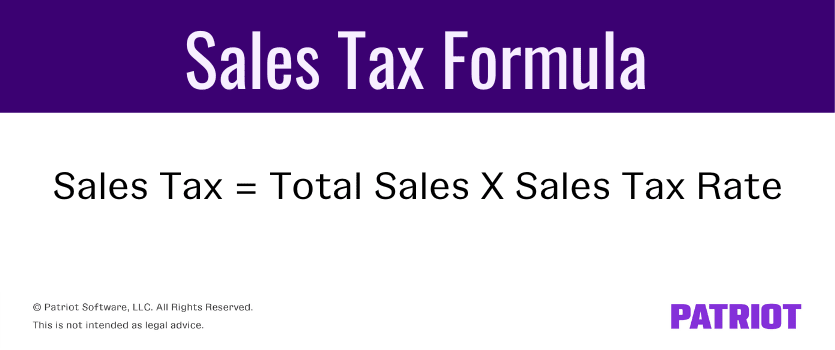For many businesses, collecting sales tax is a mandatory part of selling goods and providing services. After collecting sales tax from customers, you are responsible for remitting the tax to your state or local government. But before you start collecting, you need to know how to calculate sales tax.
Figuring sales tax rates can be complicated due to tricky sales tax laws. Once you determine the rate at which you need to collect, calculating sales tax is relatively simple.
Below, learn what sales tax is, which states have the tax, and how to find sales tax rate.
What is sales tax?
Sales tax is a tax imposed on customers when they purchase products and services. It is a pass-through tax, meaning you collect it from customers and remit it to your state or local government. As the seller, you do not contribute sales tax.
So, how much is sales tax? Sales tax is a percentage of a customer’s total bill. The sales tax amount depends on what state, county, and city your business has a physical presence in.
Do you need to collect sales tax?
You must collect sales tax if your business has a presence in a state that imposes sales tax. The majority of states enforce sales tax.
If your business has nexus in several locations, you might need to collect and remit sales tax for other states, too. What is nexus? Nexus occurs when your business has a presence in a state.
You have nexus if you store inventory, have employees, use a third-party provider to ship orders to customers, or attend a trade show in a state with sales tax. Understand origin vs. destination sales tax laws to determine whether you collect sales tax using your primary or secondary state’s tax rate.
You might not need to collect sales tax on every transaction, or even at all. Here are some instances where you might not need to collect sales tax:
1. You do business in a state that does not impose sales tax. Alaska, Delaware, Montana, New Hampshire, and Oregon do not enforce sales tax. Although there is no state-mandated sales tax in these five states, keep in mind that there might be local sales tax laws that require you to collect.
2. There is a sales tax holiday. Many states provide a day or weekend where consumers can shop without paying sales tax. Generally, your state will designate certain items that are tax free. Do not collect tax on tax-free items during a sales tax holiday.
3. The item is exempt from sales tax. Some states exempt certain items from sales tax. For example, some states do not enforce sales tax on food products. And, most states do not charge sales tax on prescription medicines. Check with your state to learn about sales tax exemptions.
4. You sell products to resellers. If you sell products to customers who turn around and sell the same product to customers, you might not need to collect sales tax. Instead, your customer, who becomes the seller, must collect sales tax. The customers must have resale certificates to be exempt from paying sales taxes.
How to calculate sales tax
If your state, county, and city impose a sales tax, you must add all the rates together to get the total rate. For example, you want to find the sales tax rate for Scottsdale, Arizona. Arizona has a state sales tax of 5.6%, Maricopa County has a county sales tax rate of 0.7%, and Scottsdale has a city sales tax rate of 1.75% (2023).
Once you know the sales tax rate you need to collect at, use the sales tax formula to calculate how much to charge the customer.
The amount you collect for sales tax depends on the percentage you collect at and how much your customer spent on products or services. For example, a customer who bought $1,000 worth of products will pay more sales tax than a customer who bought $100 worth of products.
Use the following formula to calculate sales tax:

To determine how much sales tax to charge, multiply your customer’s total bill by the sales tax rate.
Example of how to find sales tax
Let’s say your business is located in Cleveland, Ohio. You don’t have a secondary business location. You must collect sales tax at Cuyahoga County’s rate of 8.00% (state sales tax of 5.75% + Cuyahoga County rate of 2.25%; Cleveland does not have a city sales tax). Your customer’s bill before adding sales tax is $399.
Sales Tax = $399 X 0.08
Sales Tax = $31.92
Collect an additional $31.92 from the customer for sales tax. Then, remit the sales tax to the appropriate government. Contact the state for more information.
Need help tracking your business’s income? Patriot’s small business accounting software makes it easy to organize your money records. Plus, we offer free support if you have any questions. Get your free trial today!
This article is updated from its original publication date of July 12, 2018.
This is not intended as legal advice; for more information, please click here.


